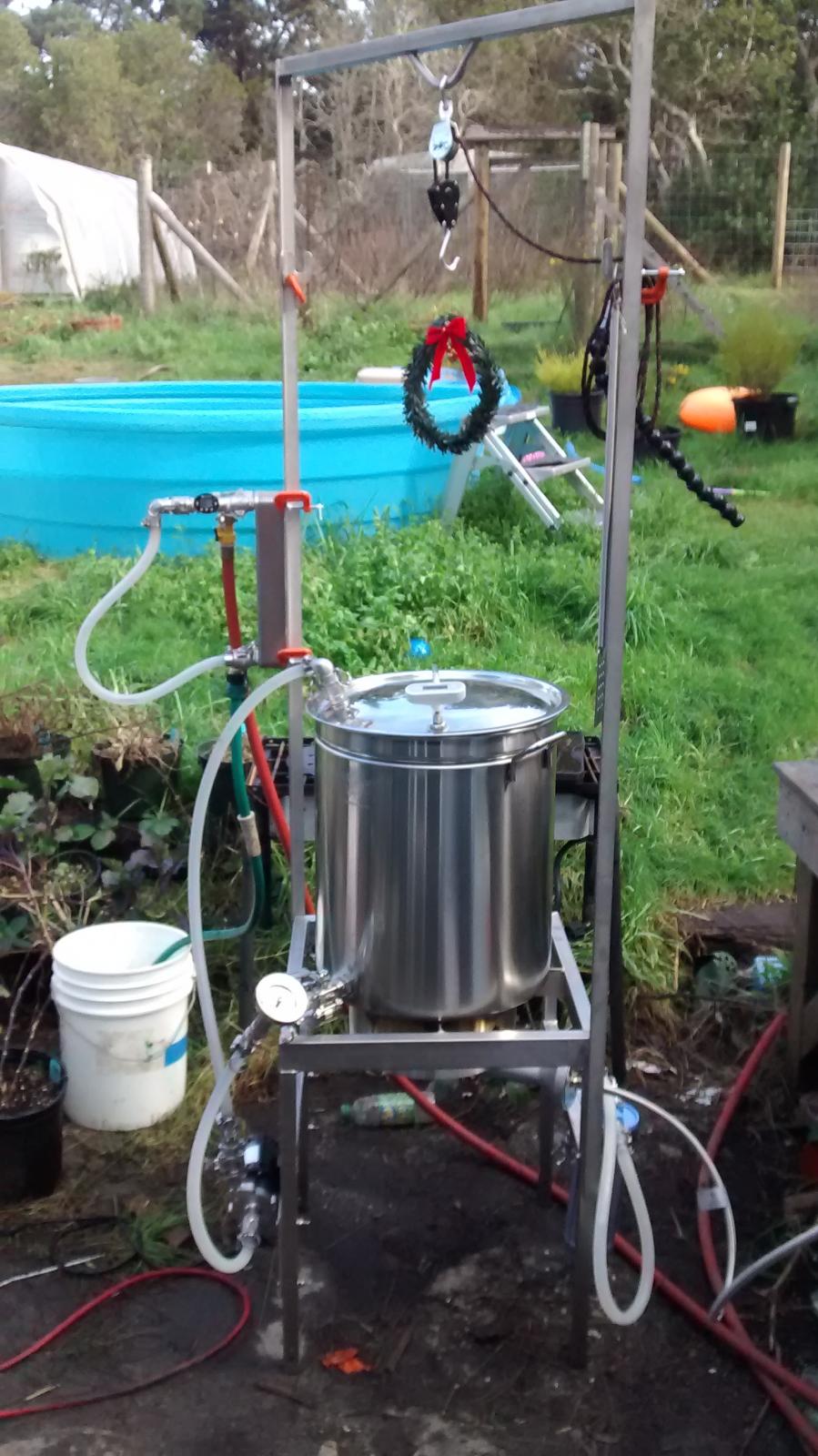Shawn3997
Will brew for beer.
- Joined
- Jul 1, 2016
- Messages
- 127
- Reaction score
- 30
My recipe is the Brown Porter from Brewing Classic Styles.
I added 7.3 gallons of water to 12.13 lbs. of grains and post-mash I got a refractometer reading of 1.047, though I didn't know how much water would be lost to the grain at that time. Post draining and squeezing, I ended up with 1.055 for 6.5 gallons, losing 0.8 gallon of water to the grain.
Working backwards in BeerSmith, a 1.047 for 6.5 gallons would have given me 71% overall efficiency, and a 1.055 for 6.5 gallons ended up giving me 83% efficiency. So that's like 12% more efficiency if you do 83-71. It's 17% more efficiency if you do ((83-71)/71)*100 and it's 17% more efficiency if you do ((55-47)/47)*100.
That's how I got the 12% number. I think if you're going to do a "squeeze" vs. "no-squeeze" you need to use a common volume although it may not matter what that volume is if you're doing percentages, just as long as the readings are for a common volume.
I added 7.3 gallons of water to 12.13 lbs. of grains and post-mash I got a refractometer reading of 1.047, though I didn't know how much water would be lost to the grain at that time. Post draining and squeezing, I ended up with 1.055 for 6.5 gallons, losing 0.8 gallon of water to the grain.
Working backwards in BeerSmith, a 1.047 for 6.5 gallons would have given me 71% overall efficiency, and a 1.055 for 6.5 gallons ended up giving me 83% efficiency. So that's like 12% more efficiency if you do 83-71. It's 17% more efficiency if you do ((83-71)/71)*100 and it's 17% more efficiency if you do ((55-47)/47)*100.
That's how I got the 12% number. I think if you're going to do a "squeeze" vs. "no-squeeze" you need to use a common volume although it may not matter what that volume is if you're doing percentages, just as long as the readings are for a common volume.























![Craft A Brew - Safale S-04 Dry Yeast - Fermentis - English Ale Dry Yeast - For English and American Ales and Hard Apple Ciders - Ingredients for Home Brewing - Beer Making Supplies - [1 Pack]](https://m.media-amazon.com/images/I/41fVGNh6JfL._SL500_.jpg)








































